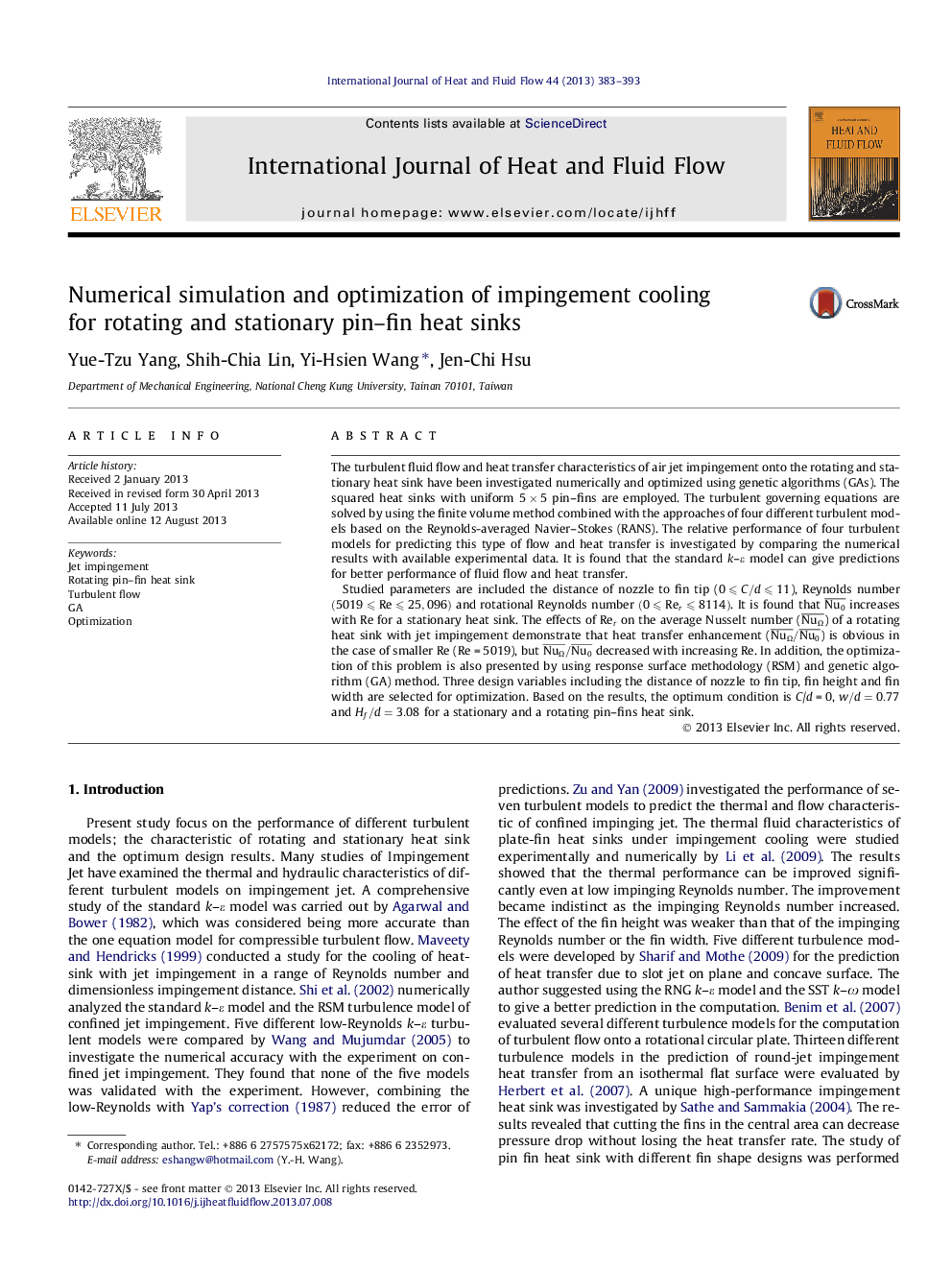| Article ID | Journal | Published Year | Pages | File Type |
|---|---|---|---|---|
| 655372 | International Journal of Heat and Fluid Flow | 2013 | 11 Pages |
•The cooling performance comparisons of air jet impingement are including rotating and stationary heat sink.•Four fluid turbulent models are implemented to compare the performance with experimental data.•The combined optimization of response surface methodology (RSM) and genetic algorithm (GA) are discussed in present study.
The turbulent fluid flow and heat transfer characteristics of air jet impingement onto the rotating and stationary heat sink have been investigated numerically and optimized using genetic algorithms (GAs). The squared heat sinks with uniform 5 × 5 pin–fins are employed. The turbulent governing equations are solved by using the finite volume method combined with the approaches of four different turbulent models based on the Reynolds-averaged Navier–Stokes (RANS). The relative performance of four turbulent models for predicting this type of flow and heat transfer is investigated by comparing the numerical results with available experimental data. It is found that the standard k–ɛ model can give predictions for better performance of fluid flow and heat transfer.Studied parameters are included the distance of nozzle to fin tip (0⩽C/d⩽110⩽C/d⩽11), Reynolds number (5019⩽Re⩽25,096)(5019⩽Re⩽25,096) and rotational Reynolds number (0⩽Rer⩽8114)(0⩽Rer⩽8114). It is found that Nu0‾ increases with Re for a stationary heat sink. The effects of RerRer on the average Nusselt number (NuΩ‾) of a rotating heat sink with jet impingement demonstrate that heat transfer enhancement (NuΩ‾/Nu0‾) is obvious in the case of smaller Re (Re = 5019), but NuΩ‾/Nu0‾ decreased with increasing Re. In addition, the optimization of this problem is also presented by using response surface methodology (RSM) and genetic algorithm (GA) method. Three design variables including the distance of nozzle to fin tip, fin height and fin width are selected for optimization. Based on the results, the optimum condition is C/d = 0, w/d=0.77w/d=0.77 and Hf/d=3.08Hf/d=3.08 for a stationary and a rotating pin–fins heat sink.
